The grass isn’t always green
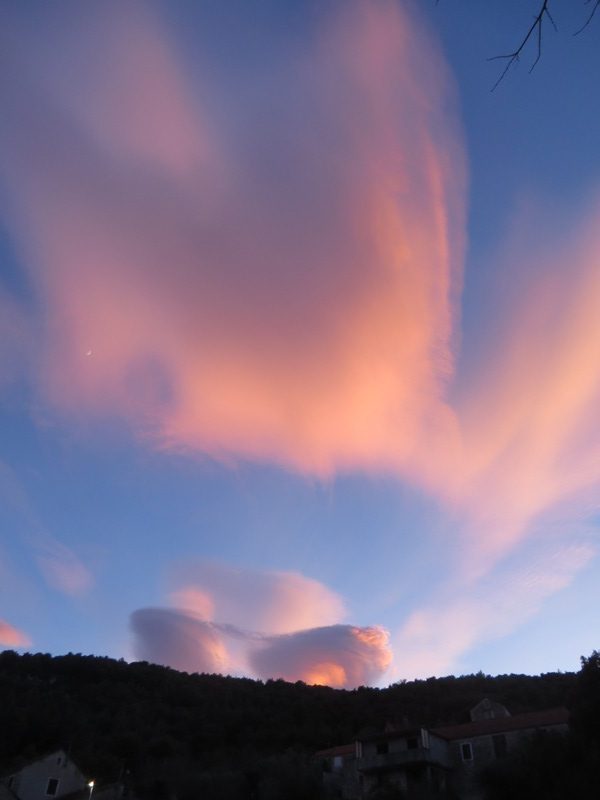
This week: Weather; Horticulture; Seed merchants; Website;
At this time of year things are a little slow.
We have had some warms days with temperatures into double figures and reaching +14ºC, but cold, clear, cloudless nights which have brought a touch of radiation frost. This has only affected a couple of parts of the citrus orchard early in the week.
The good thing is that the nights are starting to draw out noticeably. It is still just light enough to see at 17:30 – an hour later than a month ago.
With all the figures from my weather station in for 2018, I can look back and assess the year against the previous year’s figures that I have gathered. Mine is the only station on this side of the island, so I can only go back to when I first started recording.
Every day my weather station records data every five minutes throughout the 24 hours, so 5,750 separate data points. These include the temperature, humidity, dew point of five sensors including one measuring the soil temperature; wind speed and direction; precipitation; solar UV (during daylight) and atmospheric pressure.
This is then uploaded in real time to a number of international weather organisations, including the UK Met Office and the Weather Channel. But also I have two pages of my own on Wundergound. The first gives a live readout of the actual conditions for the day, together with a daily history showing all the previous records.
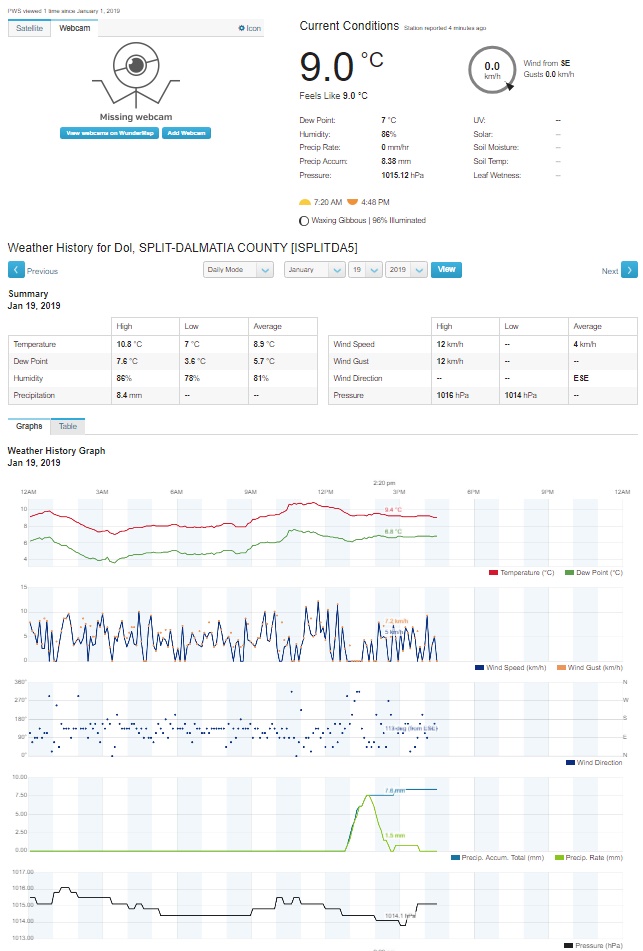
The second page is a forecast for the next ten days.
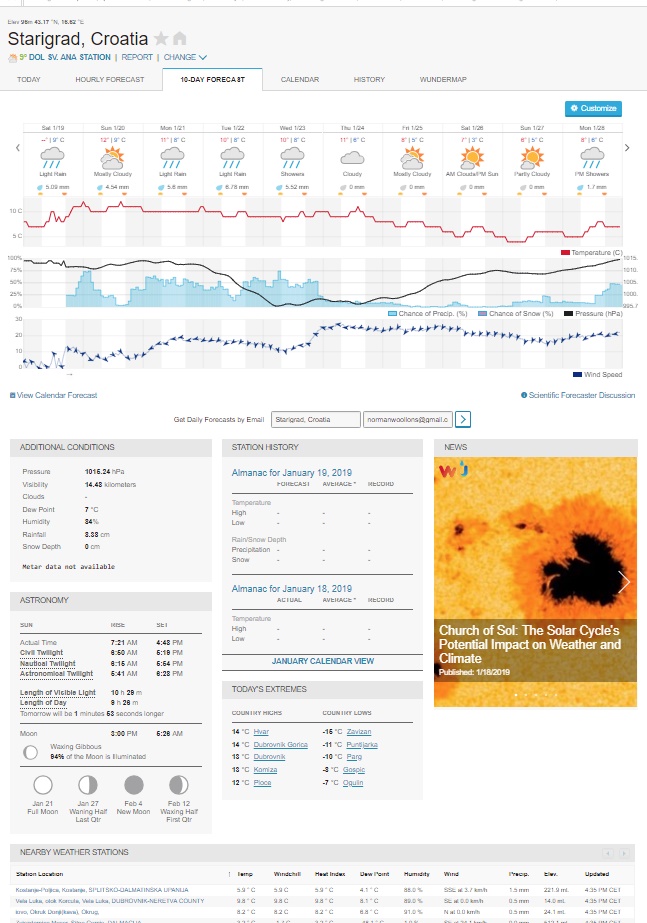
From these figures I extract the daily maximum and minimum temperatures and any precipitation onto an EXCEL spreadsheet, which then produces visual charts. To measure week by week throughout the year, against the same week in previous years, I use a standard 48 week year.
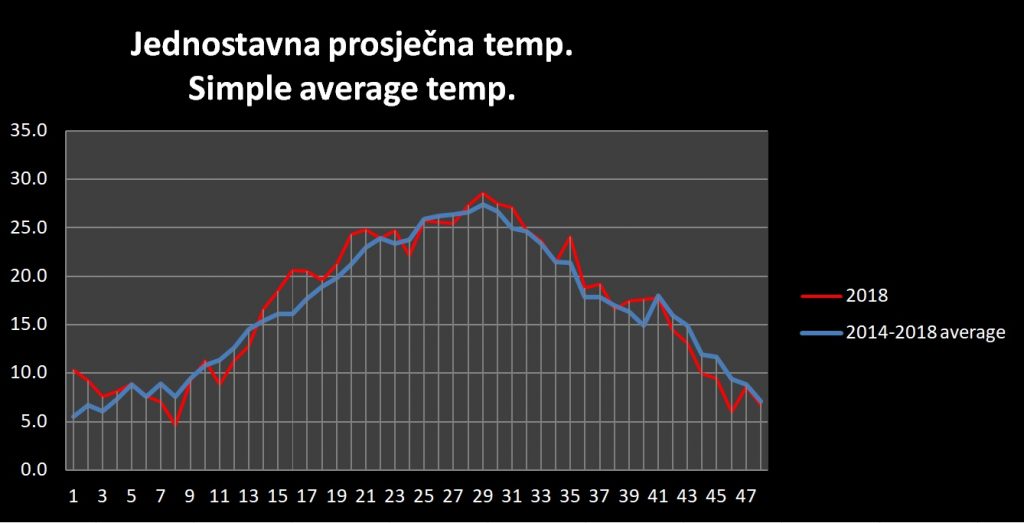
The length of a year varies, with leap year days and some years having 53 weeks – which doesn’t help when doing side by side analysis. So each of my recording months is exactly 4 weeks. This gives a total of 48 measuring periods (weeks) in every year, no matter what.
The first week always has 7 days then depending on how many days there are in the month, the next three periods have either 7 or 8 days each. But it will be same for every month, of every year.
Because of the rapid changes between the start and end of a calendar month, just having 12 monthly averages does not inform as well as having 48 almost weekly segments.
This allows me to produce a standardised chart like this.
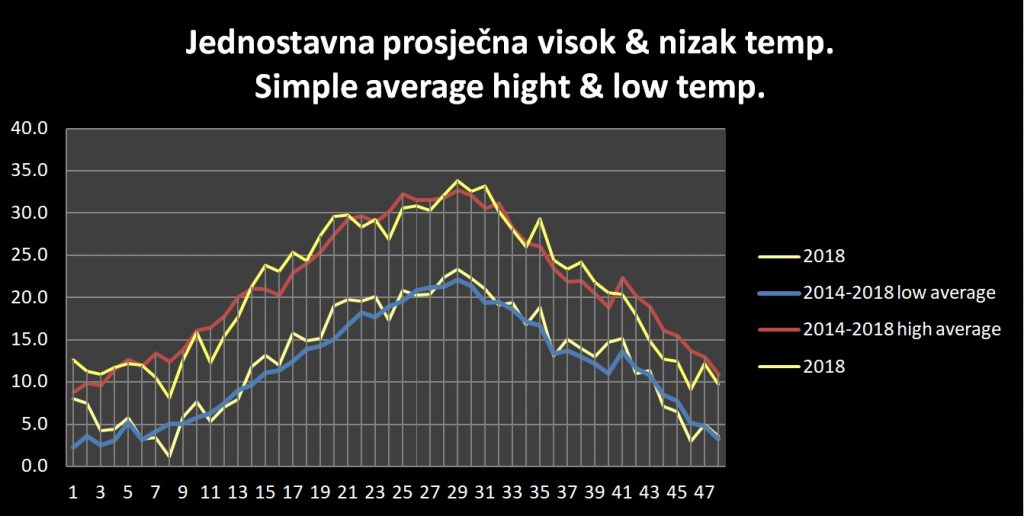
Looking at the daily maximum and minimum temperatures, the daily maximum temperatures throughout the year were slightly lower than average and the minimum temperatures were slightly higher than average. The big dip in temperature at week eight, the 4th week of February, was when we had the sudden and unusual snow storm.
From this analysis of the simple daily temperature average, I can see that the early Spring in 2018 was cooler than average. The late spring into summer, was slightly warmer than average. The Autumn was warmer than average and the early winter was cooler.
A “simple daily average” is the average of the daily maximum and minimum temperatures. A more accurate measure would be the WMO system of the temperatures taken at 01:00, 07:00, 13:00 and 19:00. I have the figures, but there is too much work involved in gathering the data and doing the calculations.
I tried it and found that the difference between a simple average and the WMO average was around 0.25ºC. So for me I’ll stick with the simple!
Over the year, the summer of 2018 has been the driest since I moved into my Dol house.
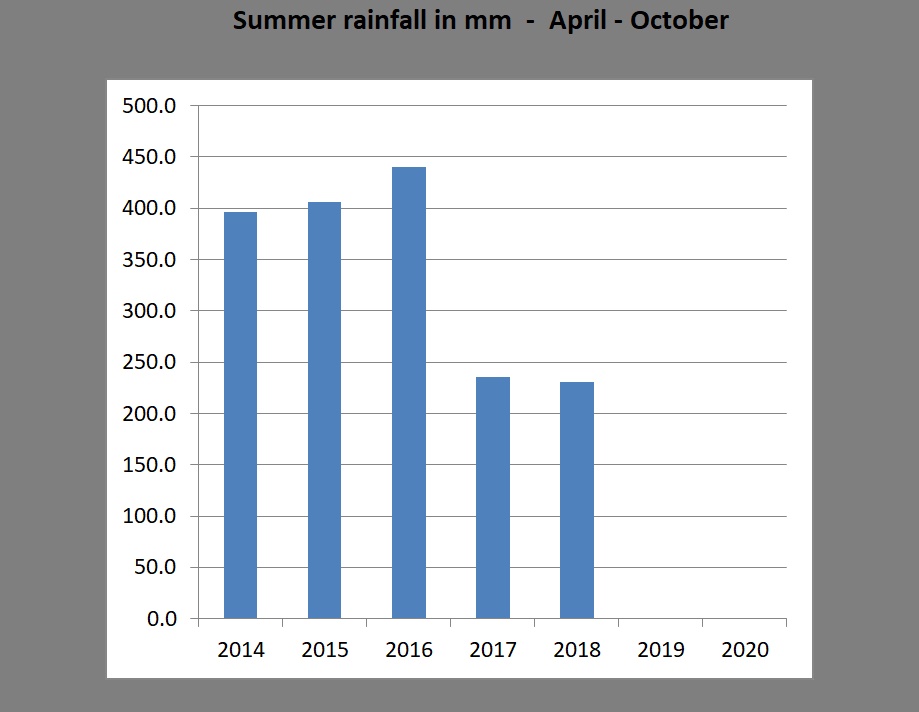
2018 precipitation generally followed the pattern of previous years, but was slightly above average in the winter and below average in the summer. The early autumn rains failed completely.
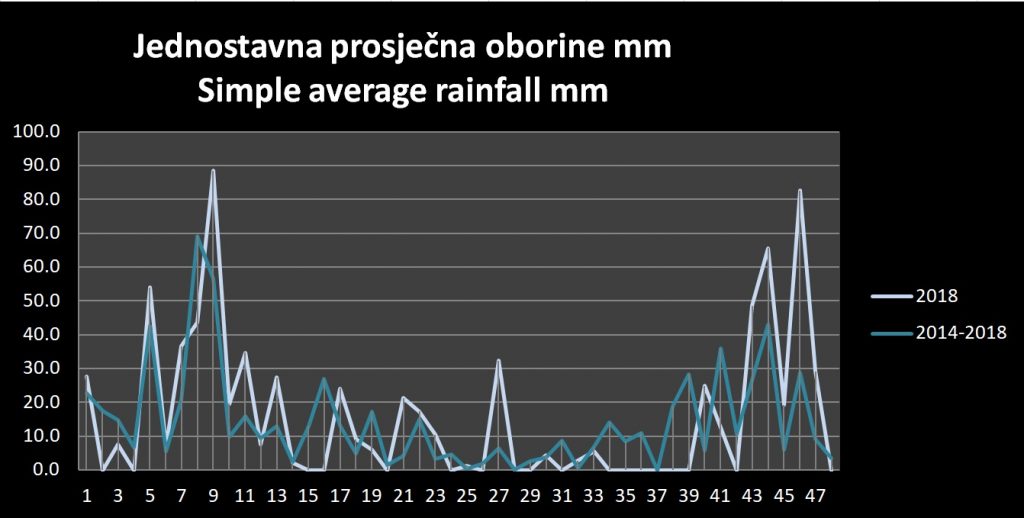
Summer is of course the time when the moisture is really needed. Winter rains are good because they fill the cisterns, but being on limestone and sandstone close to the soil surface, the rainfall readily runs through into deep aquifers.
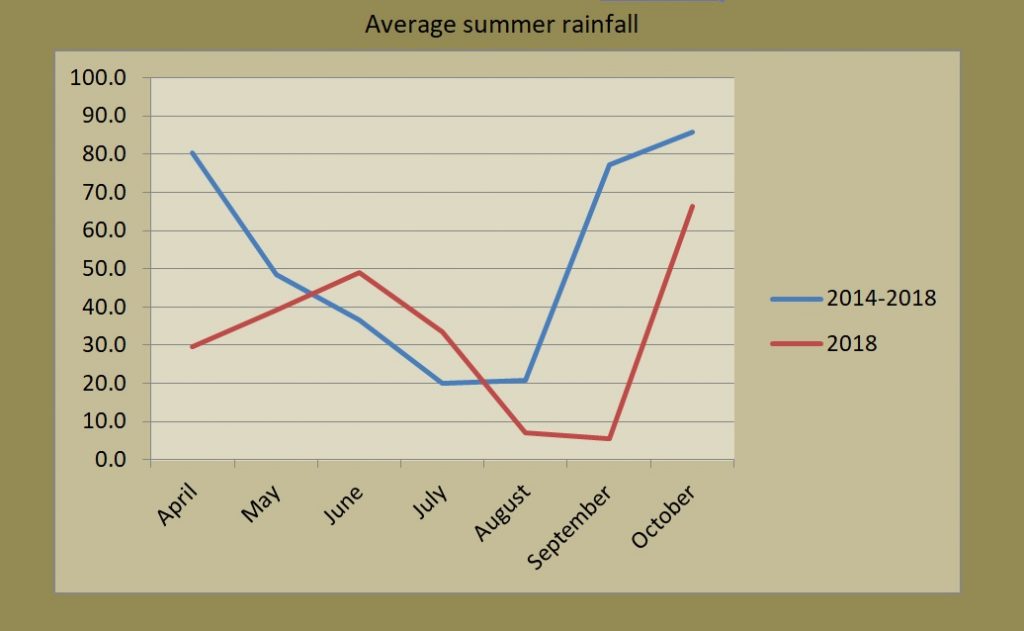
So what is my verdict on the weather in Dol in 2018? Statistically, 2018 was a pretty average year.
Horticulture
In the Drupe orchard this week I’ve been planting some raspberries.
Were you ask if there is anything I miss from the UK, it would be raspberries. I have tried six varieties but only one has survived in the poor soil and harsh conditions of my south facing orchard.
Despite having an underground irrigation system and applying copious quantities of water in the summer-dry period, only Rubus occidentalis have thrived. Nine hours of unrelenting daily sunshine bakes the ground and everything in it.
They obviously like the conditions because they propagate themselves anywhere that a shoot touches the ground. Although they have a lovely flavour, the fruit is small, so when I saw two new varieties of raspberries, supposedly happy in “harsh growing conditions”, I thought I would buy some and try them.
Four years ago when I planted my first raspberry canes, I created a weed free and cool root area for them, by laying plastic and covering it with riddled pebbles that were removed from other growing areas. This clearly hasn’t worked because even with individual drippers around the roots, the canes have died off.
Just one plant out of the two dozen I tried has survived, clinging to life by its root tips.
The recommended way of planting, which I followed was to plant the canes on a slight mound of earth, as they generally do not like to be too wet. That may be OK for northern climates where there is a fairly reliable supply of rain throughput the growing period, but even with irrigation, it has failed for me.
So this week I have been removing the stones (and weeds), lifting the plastic mulch matting and putting the new canes in a hollow, with replacement plastic on either side. So that what rainfall we do get, will be directed by gravity to where the plants are.
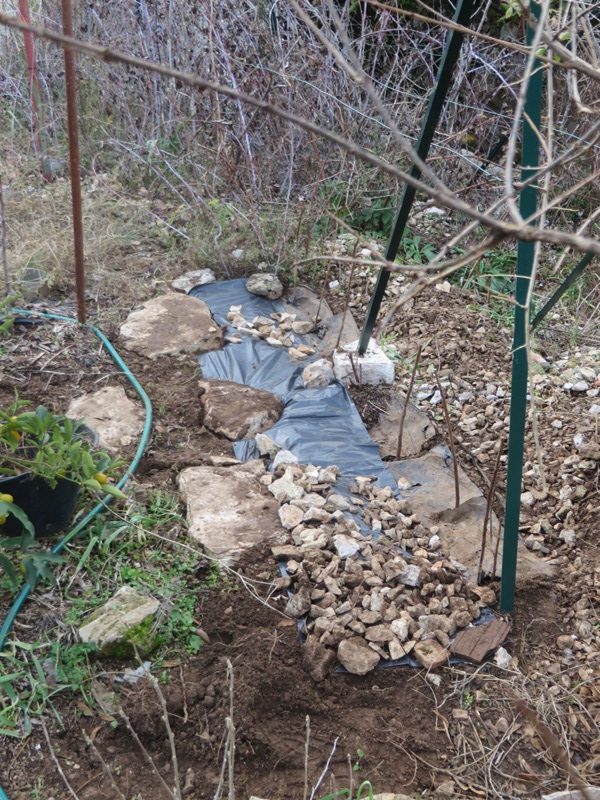
I’ve tried to riddle the stones, but being damp the clay soil that has worked it’s way in between the stones has stuck. However I’ve planted the canes, marked their location and variety on my master planting map and put new plastic down.
I honestly don’t know if this is going to work. It is a bit more of my experimental horticulture. If the half dozen plants of each variety do like the conditions, I will be able to get more canes. If they don’t, it is only a small outlay.
Seed merchants
While going through my list of garden links, I came across a seed supplier that I had forgotten about, called descriptively seedaholic.com.
While a rain shower passed, I was inside thinking about some of my “difficult” areas.
Well actually, almost all my land is difficult, whether because of soil composition, lack of organic matter, shade, summer heat, dryness or all of the preceding conditions.
Having pulled a number of weeds out this week, including quite an amount of self seeded grass and some small Alliums, which seem to thrive, despite the conditions, I thought I might have a go with ornamental grasses.
There are many very decorative ornamental grasses, but two in particular caught my eye, because of their colours. Elijah Blue, Festuca glauca, seems just too nice not to plant.

Prairy Fire, Carex testacia also has nice colours.
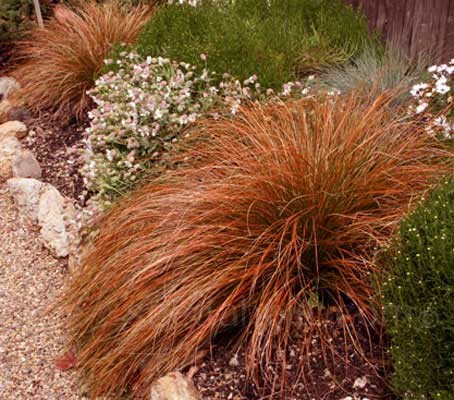
There seem to be a lot of different grasses to try, and it may be one way of making the top orchard, under the fruit trees look nice, rather than just plain weedy. Grass isn’t always green… or a weed!
Whilst browsing the website I was also able to identify one of my wild flowers.

When I first moved, I found I had these flowering weeds growing in several spots. They self seed easily and just pop up every year.
They are Verbascum nigrum. One of the other things I like about this website is that they provide a full and detailed growing guide rather than just a few lines of how and when to plant.
Clearly the owners have taken a lot of trouble to produce a really useful website which is worth a visit.
The website
I’m still working on the weekly blog website, adding some back pages, but I’ve run up against my internet data limit.
Because I am on a metered satellite system, having no telephone connection, I have a limit on how much data I can upload and download each month.
I am using Google Analytics to gather some data on the website readership. After two issues, I’ve discovered that more than half of all readers are using portable devices, with fully ⅓ using smart phones. This information is useful because it means I can alter the pages to be more smart phone friendly.
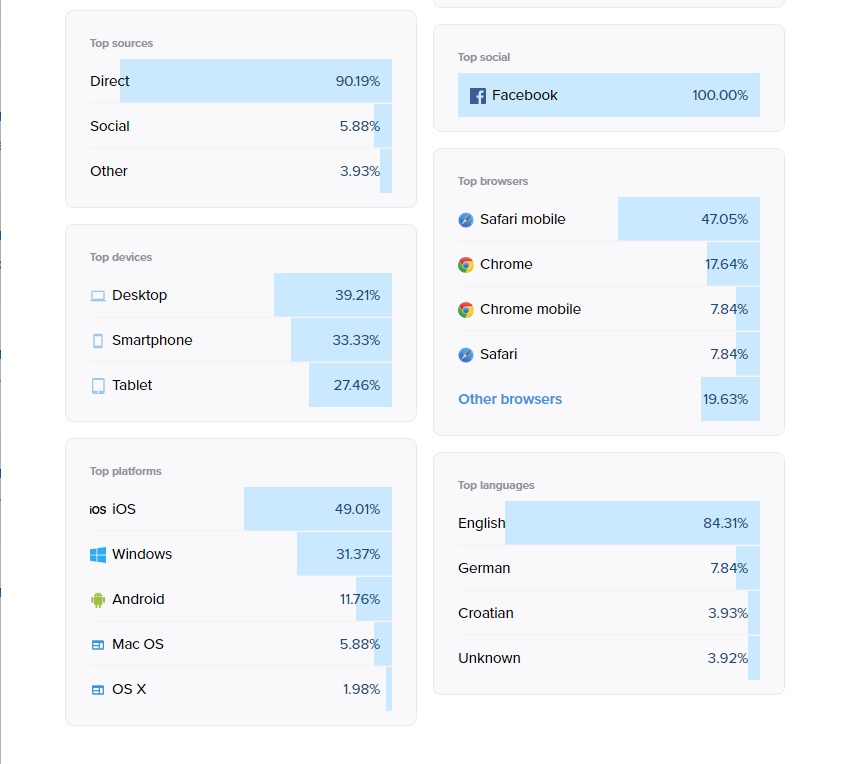
I have tended to take mainly landscape photographs, with only occasional portrait format. Clearly I need to reverse this, so that the photographs fit the orientation of the way folk hold their phones.
On a desk top it doesn’t matter, but I’d like to improve the reader experience on the devices most readers are using. Over time, the number of smart phone readers will increase, so I can make that adjustment for them.
The website does adjust dynamically to the three kinds of devices, but it can only go so far. Clearly the world is changing from a landscape to a portrait view of things.
There will still be times where because of the subject, landscape view is the only option, for example panoramic images, but I will start taking more portrait views. I have a problem with images in my archive, because they are 4 to 1 landscape orientation! NRC
3 Responses
Andy Obridge
Another fascinating read, thanks Norman.
I really will have to see how does your garden grow.
I won’t put the rest of the song!
Elizabeth
Hi Norman, don’t forget that smartphones can be rotated…so you could stick to your landscape orientation.
Happy gardening. Look forward to hearing about the fruits of your labour. X
Marcy Fletchall
Awesome blog. Love the pictures. Looking forward to the next!